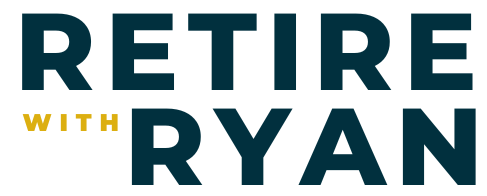7 Best Short-Term Investments To Grow Your Money
If you’ve been sitting on extra cash in your bank account, now’s the time to rethink your short-term investing strategy. Today, I will go over seven short term investments to get the most out of your money.
1. Online Money Market Accounts
Most traditional banks are still offering next to nothing in interest on savings, so if you’ve got cash sitting idle, moving it to an online money market account can be a smart move.
Online banks like those featured on Bankrate.com or NerdWallet.com often offer rates around 4.00% or more. Just be sure to read the fine print—some accounts have transfer restrictions or clunky mobile apps. But for the most part, setting one up takes less than 10 minutes and could significantly boost your returns on idle cash.
2. Mutual Fund Money Market Accounts
If you already invest with a brokerage like Charles Schwab, TD Ameritrade, or Fidelity, you might consider their money market mutual funds. These work similarly to bank money market accounts but are offered by investment firms.
For example, Schwab’s Value Advantage Money Fund (SWVXX) is yielding around 4.18%, with a small expense ratio that brings your net yield to closer to 4.00%. Vanguard’s VMFXX is another option yielding close to 4.23%. These are great if you prefer to keep all your assets—stocks, bonds, and cash—in one place.
3. One-Year Certificates of Deposit (CDs)
If you’re okay locking up your money for a year, CDs are offering attractive yields right now. As of this writing (written on April 17th), one-year CDs are offering about 4.50%.
Check sites like Bankrate or visit your local bank or credit union for potential promotional rates. Just be aware of early withdrawal penalties and the impact of rising rates—locking in too long might leave you missing out on even better returns down the line.
4. Short-Term Bond Funds
Short-term bond funds offer a balance of liquidity and yield, especially if you choose ultra-short duration funds. These funds invest in bonds that mature in just a few years or less, reducing interest rate risk.
Two I like:
JP Morgan Ultra-Short ETF (JPST)
PGIM Ultra-Short Bond ETF (PULS)
5. Short-Term Treasury Bonds
U.S. Treasury bonds are one of the safest investments you can make, and right now.
For example, a 2-year Treasury bond is yielding around 3.82%, while a 10-year is closer to 4.33%. If you hold the bond to maturity, you’re locking in a solid return with minimal risk, plus interest on Treasuries is exempt from state income tax, which boosts the effective return for many investors.
6. Fixed Annuities
If you’re comfortable sacrificing liquidity for a higher yield, a fixed annuity might make sense. Think of it as a CD issued by an insurance company.
Some 3-year fixed annuities are offering interest rates around 5.50%. However, keep in mind:
Early withdrawals can come with steep penalties
Interest is taxed as ordinary income (state and federal)
The money may be inaccessible for the first year
Fixed annuities are best suited for money you’re confident you won’t need in the short term.
7. I Bonds – The Inflation Fighter
I Bonds are arguably the best short-term investment available right now, especially in this high-inflation environment.
These government-issued savings bonds are tied to the Consumer Price Index, which means their interest rate adjusts every six months based on inflation.
A few caveats:
Max investment: $10,000 per person per year
Must hold for at least one year
Early withdrawal (within five years) costs three months’ interest
You can invest an additional $5,000 with your federal tax refund
Despite the limitations, even holding for just one year could earn you more than any other investment on this list.
If you have a question or topic that you’d like to have considered for a future episode/blog post, you can request it by going to www.retirewithryan.com and clicking on ask a question.
As always, have a great day, a better week, and I look forward to talking with you on the next blog post, podcast, YouTube video, or wherever we have the pleasure of connecting!
Written by Ryan Morrissey
Founder & CEO of Morrissey Wealth Management
Host of the Retire with Ryan Podcast


